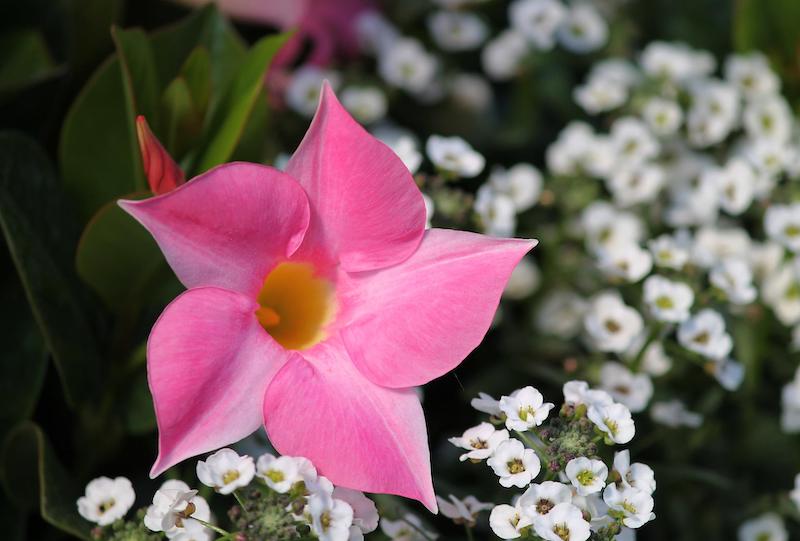Mandevilla is a fast-growing vine that goes by the common name rock trumpet and features showy 5-petaled blooms. Mandevilla is native to tropical and subtropical regions and grows as a perennial in most areas. In areas where Mandevilla grows as a perennial, it is susceptible to foraging animals year-round. Elsewhere, this plant is only available to hungry animals during the spring, summer, and fall.
Mandevilla is generally considered deer resistant, making it a good choice for areas with large deer populations. Eating this poisonous plant can cause an upset stomach, nausea, and vomiting. Mandevilla also produces a white sap that can cause skin irritation. Animals may do the unexpected if other food sources are scarce, but Mandevilla is generally not favored by most foraging animals.

Keeping Deer Away From Mandevilla
Since deer and other animals do not generally like to eat Mandevilla, it isn’t necessary to take steps to protect this plant. You can plant this vine near more vulnerable plants to protect them from damage. If deer become a problem, physical barriers, like a fence, are a good way to keep animals away from plants. Scent-based repellents are another option to protect plants like Mandevilla from hungry animals.

Will Mandevilla Come Back After Deer Eat Them?
The amount of damage and the climate will determine if Mandevilla can bounce back after animal damage. Mandevilla puts on growth quickly and is likely to fully recover from deer browsing. However, young plants, not fully established, may struggle to regrow, especially if they sustained extensive damage.
 |
Author Alison Cotsonas - Published 30-08-2022 |
